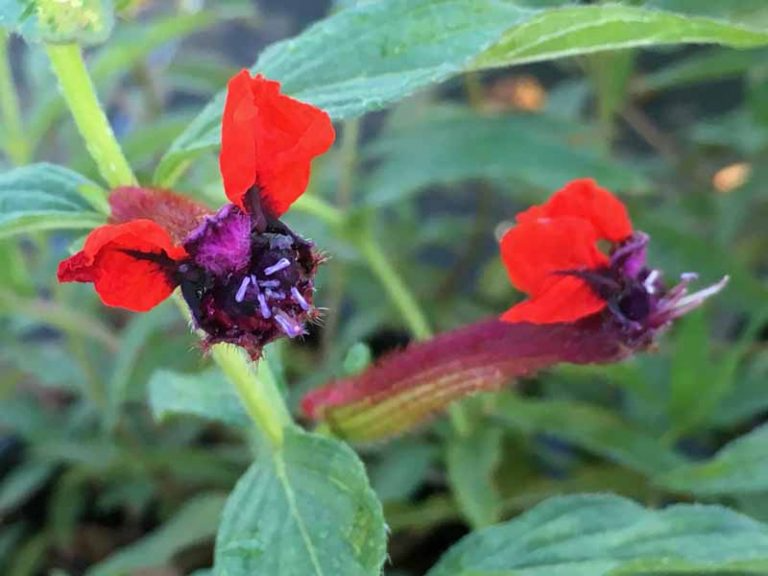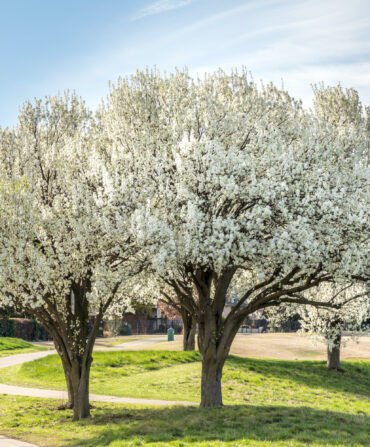Asking plant people to choose one preferred cultivar is a little like asking parents to choose a preferred child. That is, impossible (but upon further reflection…well, never mind). Fortunately, these green thumbs dug deep and supplied us with inspired picks. And the best part is you don’t actually have to choose just one to add to your garden; why not plant them all?
Spring starflower (Ipheion uniflorum)

Expert: Barbara Sullivan, certified master gardener and author, Climate Change Gardening for the South
Location: Wilmington, North Carolina
Why I love it: Spring starflower is a tiny bulb I’ve been growing in my garden for almost forty years. Now I have thousands of these little flowers blooming all over my yard beginning in early February. It is very delicate and understated and plays well with others. It works beautifully with pansies, miniature daffodils, and any other early spring-blooming annual, perennial, or bulb. It’s also completely reliable, unfazed by the stressors of our hotter summers or occasional super-cold winters. It multiples easily into clumps of sister bulbs without being in any way invasive. It blooms in full sun or light shade and requires no special soil amendments or fertilizer. It has the added advantage of thin, grass-like foliage that ages unobtrusively as later-blooming perennials emerge. Gardeners who are transforming their monoculture lawns into biodiverse tapestry lawns can easily incorporate spring starflowers into their schemes. I think the reason I love it most is that it is our harbinger of spring. In the grayest, coldest, shortest days of winter, seeing the tiny, milky blue flower of an Ipheion uniflorum always makes me stop and say hello.
Bog sage (Salvia uliginosa)

Expert: Daniel Grose, director of horticulture, Memphis Botanic Garden
Why I love it: True blue is one of the rarest colors to find in a garden, and Salvia uliginosa is as blue as it gets. I first saw bog sage at a botanic garden and was struck by its color. The horticulturist there kindly offered to dig up a few clumps for me. I planted them at home that afternoon and the magic began. The first time I saw a yellow swallowtail drinking nectar from the sky-blue flowers, I knew that moment would be hard to top! While its common name tells of a preference for wet areas, it is actually quite tough and adaptable to almost any garden soil as long as it has full sun. It is quite a spreader, so make sure it has some space.
Bat-faced cuphea (Cuphea llavea)

Experts: Tom Wolfe and Matt Frost, owners, Urban Roots Garden Center
Location: New Orleans
Why we love it: We love that it’s a flowering machine, always covered in blooms. The first time I [Tom] saw this plant was at an abandoned restaurant in Ocean City, Maryland, in 1998. In a row of eight planters along the side of the building, this plant was not only alive, but in full bloom. I’ve planted it in my containers every year since. In New Orleans, we plant them in April for blooms that start in May. It takes heat and drought and does great in a container, where it cascades over the side, and in the front of a perennial border.
“Ruth’s Red Climber” (Rosa “Ruth’s Red Climber”)

Expert: Jason Powell, owner, Petals from the Past nursery
Location: Jemison, Alabama
Why I love it: My favorite plant I’ve ever planted is an old garden rose we call Ruth’s Red Climber, though its true name is Fields of the Woods. It has a fragrant, double-flowered blossom that occurs repeatedly throughout the growing season in central Alabama. I love this rose because Ruth Knopf, an amazing lady and all-around phenomenal gardener, shared a cutting with me when my wife, Shelley, and I stayed at her home on Sullivan’s Island, South Carolina, during a fall garden conference. It was blooming in her front garden draped across a white arbor. When she saw how taken we were with this rose, she pulled her clippers out of her pocket, snipped five cuttings, wrapped them in a moist towel in a Ziploc, and sent them with us. It has thrived in our garden, and we’ve made so many cuttings from it to share with others.
Forest pansy redbud (Cercis canadensis)

Expert: Peter Grimaldi, vice president of gardens and facilities, Cheekwood Estate & Gardens
Location: Nashville
Why I love it: Forest pansy is a weeping form with dark purple foliage. Cultivated varieties of native trees offer an appealing diversity of size, form, and color for a wide range of landscape and garden uses. We find collecting fun cultivars to be an effective way to build our native tree collection at Cheekwood. I planted one in the front yard of a best friend’s family to honor his late mother, who enjoyed dying her hair bright shades of purple and pink. My wife helped me with the task, which added to the ceremony of the moment. Now “Dana’s Tree” delights family and friends with memories every spring when the small tree overflows with pink flowers dripping from its pendulous stems.








